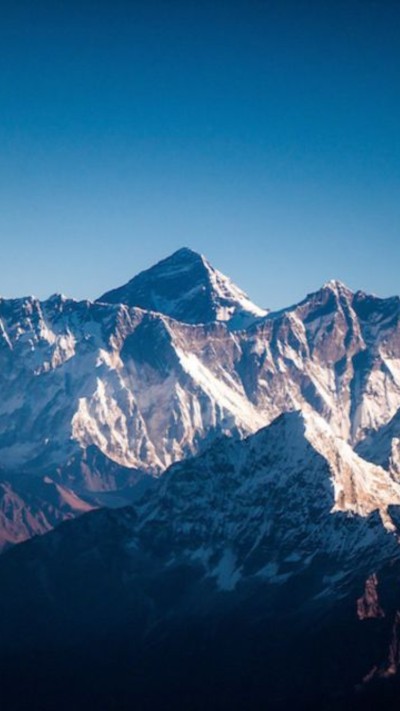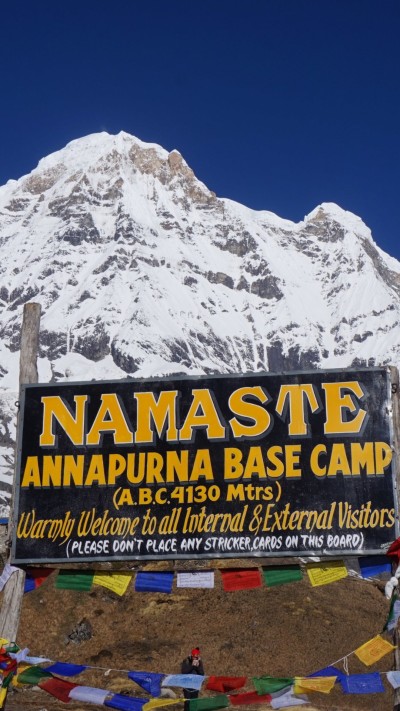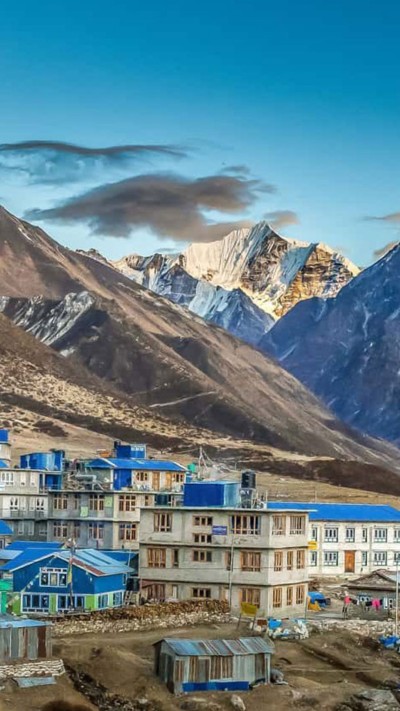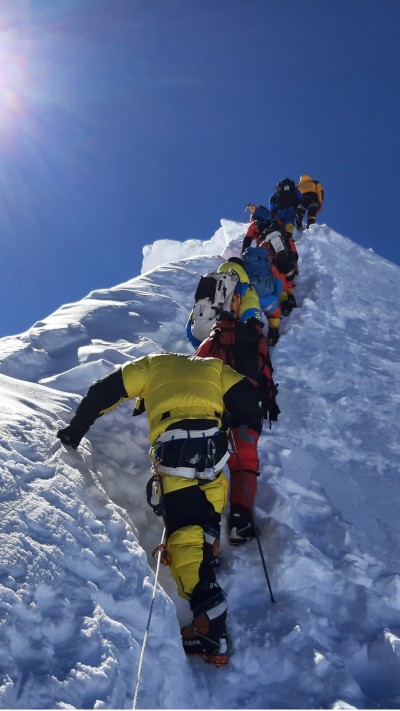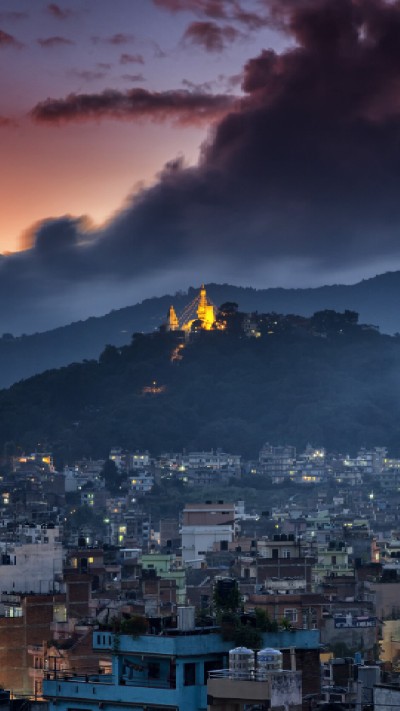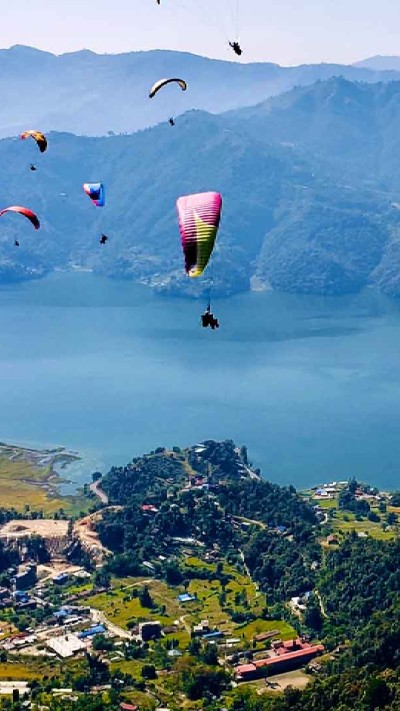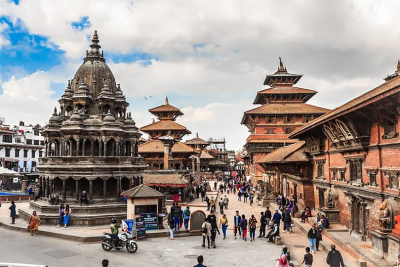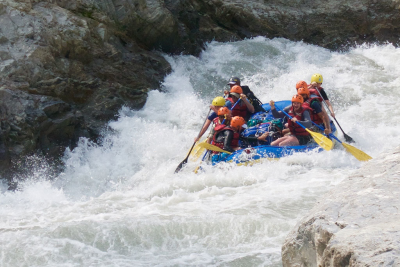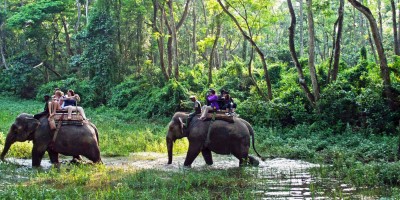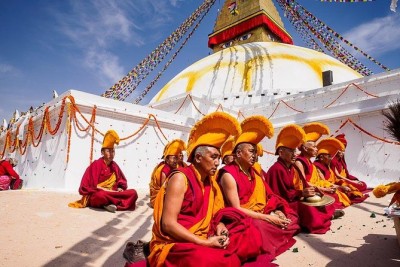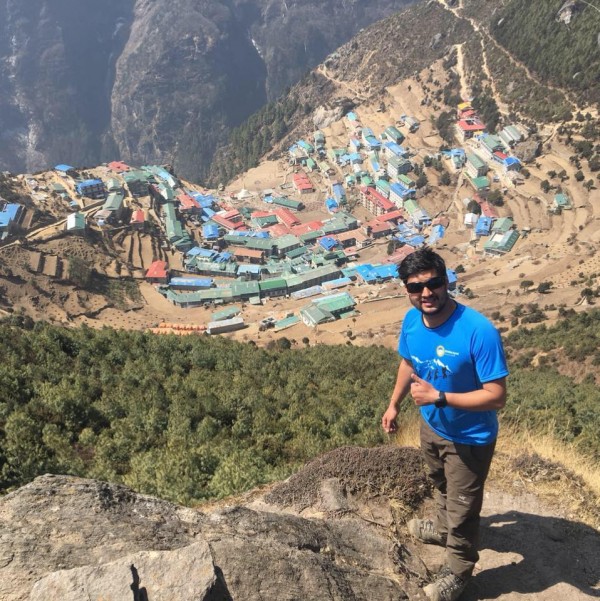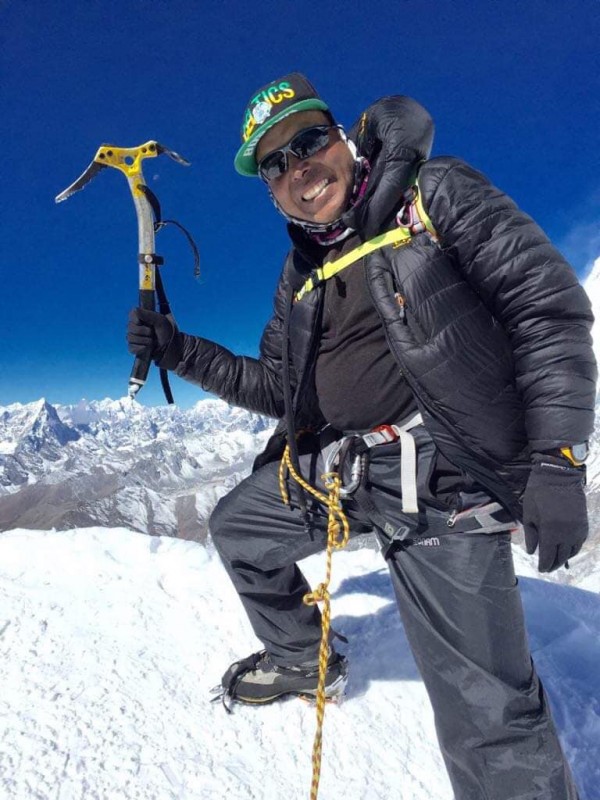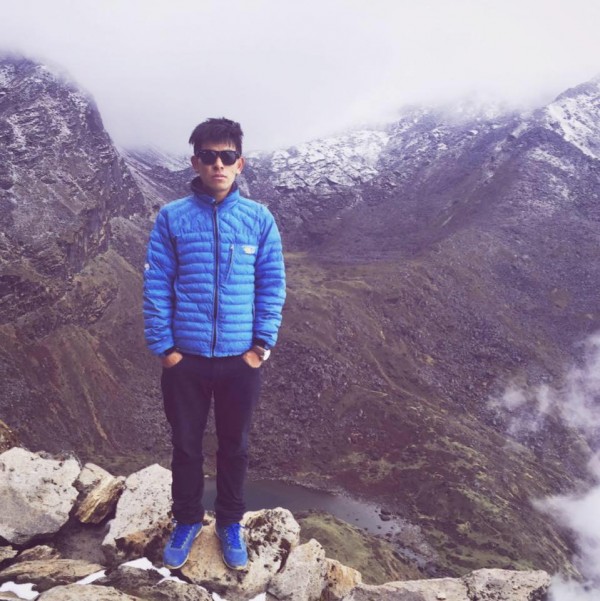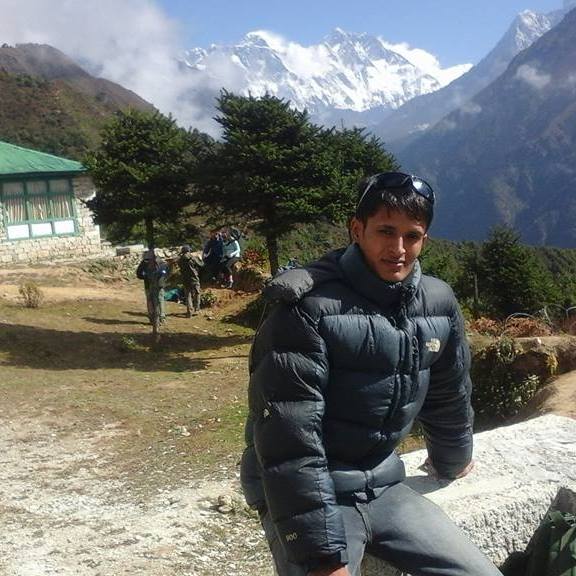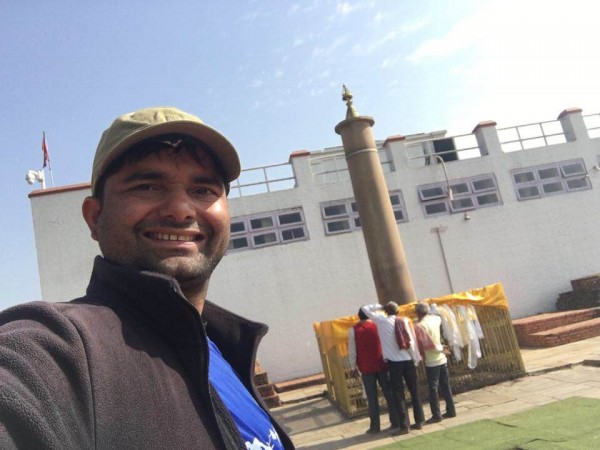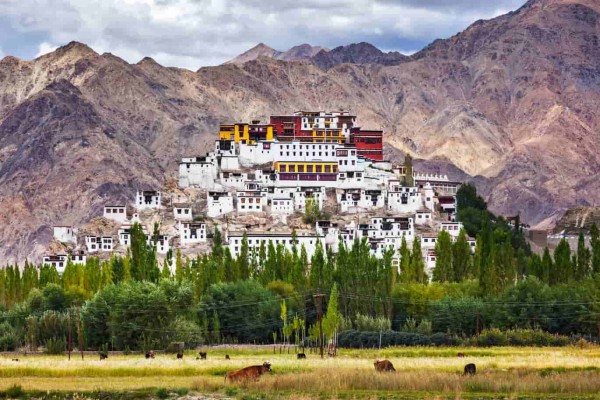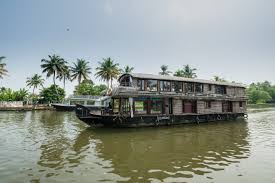INDIA’S LUXURY GOLDEN TRIANGLE WITH VARANASI TOUR
Region
Sightseeing Tours of India
Duration
10 Days
Min Group Size
2 people
10 days India's Luxury golden triangle with Varanasi tour two internal flights Delhi-Varanasi-Delhi is an exclusive package offered by Himalayan Social Journey. In this tour, you will visit major places of India within a short period of time. You will visit the capital city of India, Delhi. And then traverse to the holy pilgrimage site, Varanasi. Before making your way into city of temples, veranas, you will visit ancient traditional vity of Jaipur. In Delhi, you will visit Red Fort, Jamia Masjid & Chandni Chowk , Humayun’s Tomb , Qutub Minar Lotus Temple and India Gate. Likewise, you will visit City Palace, Jantar-Mantar (Observatory), Hawa Mahal, Albert Hall Museum ,Amer Fort and Jal Mahal. Furthermore, you will visit Agra, the home of the Taj Mahal and the historic Agra fort.
Outline Itinerary ( 10 Days )
-
1
Arrival Day
On arrival at Delhi airport meet and greet by our representative later transfer to your hotel. Stay overnight at Hotel.
-
2
Old Delhi City Tour with Delhi Metro and Rickshaw Ride in Old Town
After breakfast Sightseeing tour of Old Delhi
Start By visiting the
Jama Masjid:- Jama Masjid is another marvelous treasure of the Old City, and is the largest mosque in India. Its courtyard can hold an incredible 25,000 devotees. The mosque took 13 years to build, and was completed in 1650. A strenuous climb to the top of its southern tower will reward you with a stunning view across the rooftops of Delhi. Be sure to dress appropriately when visiting the mosque or you won't be allowed in. This means covering your head, legs and shoulders. Attire is available there.
Chandni Chowk:- The Chandni Chowk (Moonlight Square) is one of the oldest and busiest markets in Old Delhi, India. Chandni Chowk is located close to Old Delhi Railway Station. The Red Fort monument is located within the market. It was built in the 17th century by Mughal Emperor of India Shah Jahan and designed by his daughter Jahanara. The market was once divided by canals (now closed) to reflect moonlight and remains one of India's largest wholesale markets.
Spice Market :- A bit west of Chandni Market you will find yourself on Khari Baoli Road in the heart of Asia's largest wholesale spice market. Here we found hundreds of shops dealing in refined, local and exotic spices. This large market area is rich in color and photographic opportunities, and is well worth seeking outBefore heading to Red fort we will stop for lunch after lunch we will visit
Red Fort:- Delhi's most famous monument, the Red Fort, stands as a powerful reminder of the Mughal emperors who ruled India. Its walls, which stretch for over two kilometers (1.2 miles), were built in 1638 to keep out invaders. However, they failed to stop the fort being captured by the Sikhs and the British. Stay overnight at Hotel in Delhi.
-
3
Delhi / Jaipur
After breakfast proceed to Jaipur.
We will have First coffee Break for 15-20 min after crossing the Delhi. After Reaching Jaipur we will have lunch and then start a sightseeing tour of few places of Jaipur visit:-
City Palace:- situated in the heart of the old City, it occupies about one seventh of the old city area. The palace is a blend of Rajput and Mughal architecture, it houses a Seven storeyed Chandra Mahal in the centre, which affords a fine view of the gardens and the city. Diwan-E-Am (Hall of public audience) has intricate decorations and collection of manuscripts, Diwan-E-Khas (Hall of private audience) has a marble pawed gallery Mubarak Mahal has a rich collection of costumes and textiles. There is a Clock Tower near Mubarak Mahal. SilehKhana has a collection of armory and weapons.
JantarMantar:- built in 18th century by Maharaja Sawai Jai Singh II, the huge masonary instruments were used to study the movement of constellations and stars in the sky. Enormous sun-dial still provides accurate time, which is subject to daily corrections.
Albert Hall Museum:- situated in the Ram Niwas Garden. This graceful building was founded in 1876 by Prince Albert (also known as Albert Hall). It has a rare collection of archaeological and handicraft pieces.Later back to Hotel, Stay overnight at Hotel in Jaipur.
-
4
Jaipur
Early morning after breakfast proceed to sightseeing tour of Jaipur, Direct sunlight on the Hawa Mahal is most amazing sights to see from outside and will stop there for photo shoot
HawaMahal:- built in 1799, by Maharaja Sawai Pratap Singh, is the most recognizable monument of Jaipur. The 5 storied stunning semi-octagonal monument having 152 windows with over hanging latticed balconies is a fine piece of Rajput architecture. Originally designed for the royal ladies to watch and enjoy the processions and other activities, on the street below. Now it houses a well laid out museum. The display “Jaipur past and present” is the special feature of this newly setup museum.
Later drive to Amer Fort there experience the Jeep Ride/Elephant ride from old town to reach the Courtyard of Amer fort , Back days king army used same route.
Amer Fort:- The old capital of the Kachhwahas stands atop a range of craggy hills. The fort is remarkable as much for the majestic grandeur of its surroundings as for its sturdy battlements and beautiful palaces. It is a fine blend of Hindu and Muslim architecture. The solemn dignity of it red sandstone and white marble pavilions, when reflected in the lake at the foot hill, is a sight to behold. The original palace was built by Raja Man Singh.
JalMahal:- On the way Back From Amber Fort , this small palace is set in the middle of Man Sagar Lake. Renovation around the lake is in progress.
After Sightseeing we will stop for lunch after visit most Unique Art of Jaipur which is Block printing.Evening free visit Local Markets Later back to Hotel, Stay overnight at hotel in Jaipur.
-
5
Jaipur / Agra
After breakfast proceed to Agra and visit en-route to:
FatehpurSikri:- Built by Akbar, the Mughal emperor in 1570, the city was a tribute to Sufi Saint. FatehpurSikri is a perfect blend of Indian, Islamic and Persian architecture and it was built using red sandstone. For around 10 years, the city remained the capital of Mughal Empire. The city has a 6-kilometer long wall on three sides and there are towers and gates. It houses some of the city’s important buildings namely BulandDarwaza, Birbal’s House, PanchMahal and Jama Masjid. The entire city along with all the important constructions including royal palaces, Jama Masjid and courts were declared as World.
Or optional
Abhaneri is a village in the Dausa district of Rajasthan state in India. It is situated at a distance of 95 km from Jaipur, on the Jaipur-Agra road. The place is popular for the Chand Baori step well and Harshat Mata Temple.
Later proceed to Agra. On arrival check in Hotel. Stay overnight at Hotel in Agra.
-
6
Agra / Delhi
Early Morning Sunrise visit to Taj Mahal
TajMahal:- You cannot think of Agra without thinking of TajMahal. Or, you might not have thought of Agra were it not for the monument of love. TajMahal, the white marble beauty was constructed by Shah Jahan in memory of his beloved wife, MumtazMahal. The monument stands proof for the brilliance of Mughal architecture. Named as one of the wonders of the world, TajMahal stands the test of time. It has been declared as World Heritage Site in the year 1983. It is a feast to your eyes and senses to watch the unmatched beauty on the night of full moon day. (*Taj Mahal Closed on every Friday)
Later Back to Hotel for Breakfast , after breakfast we will checkout and Visit:
Agra Fort :- You would regret if you miss Agra Fort during your visit to Agra. The 16th century monument is yet another proof of the architectural brilliance of Mughals. This is situated near the gardens of the world famous TajMahal. Called the Red Fort of Agra, you will be awe inspired by the powerful fortress. The fortress comprises many palaces namely, Jahangir Palace, KhasMahal and so on. There are audience halls and two mosques. The entire fortress is a symbol of Mughal’s grandeur. It was in Agra Fort Shah Jahan was held prisoner by Aurangazeb, his son. Shah Jahan, the emperor, spent his last days here viewing the monument of love he had built for his wife.
Afternoon proceed to Delhi, Check-in to the hotel, Stay overnight at hotel in Delhi.
-
7
Delhi / Varanasi
Morning after breakfast transfer to the airport to board the flight for Varanasi. Upon arrival in Varanasi, meet and greet with tour representative later transfer to the hotel.
Afternoon start a sightseeing tour of Varanasi By Experiencing the Old Town With Rickshaw Ride and visit:
Annapoorna Devi Temple:- Annapurna or Annapoorna is the Hindu Goddess of nourishment. Anna means food and grains. Purna means full, complete and perfect. She is form of Parvati, the consort of Shiva. The most well-known temple dedicated to Goddess Annapurna is in Varanasi, U.P., India. Adjacent to the Sanctum of the Goddess is the KasiViswanath temple. The two are separated by only a few yards. Annapurna is regarded as the queen of Varanasi alongside her husband Vishweshwar (Shiva), the King of Varanasi. In the temple, at noon time, food offerings to the
AssiGhat:- AsiGhat, the Ghat located at the confluence of Assi River and the holy Ganges, is the southernmost Ghat in Kashi. The Ghat is renowned for a spectacular and large Shiva Lingam placed under a Peepal Tree. This is a favorite spot for Hindu devotees to offer their prayers to Lord Shiva after taking holy dip in the river.
Bharat Mata Temple:- Bharat Mata Temple, a fairly new temple built in 1936 and located at KashiVidyapeeth Campus, is a shrine dedicated to Mother India. This temple was built by a Gandhian follower Babu Shiv Prasad Gupt and was inaugurated by Mahatma Gandhi.
Dashaswamedh Ghat:- Dashaswamedh Ghat, a much acclaimed religious spot, is a very favorite among the Hindu devotees and is considered as the main Ghat. It is believed that Lord Brahma performed his victorious Dasa_Ashwamedha (ten-horses) sacrifice in this spot. Legends claim that a similar kind of ten horse sacrifice was done here in the second century by Bhara Shiva Naga rulers.
Evening visit Ganges Aarti Ceremony:- Varanasi is a sacred and oldest city of the world located at the banks of the holy River Gange. Where, Gange aarti is performed daily in the evening by a group of priests at the Dashashwamedh ghat. Through the aarti, Agni Pooja is performed in which a commitment is made to the Lord Shiva, Mata Gange.
Stay overnight at hotel in Varanasi.
-
8
Varanasi (Boat ride Sunrise on Ganges ) & Buddhist Temple Sarnath excursion Evening Flight Varanasi to Delhi
Sunrise at Ganges with Boat Ride, Later Back to Hotel for breakfast.
After breakfast relaxation at hotel afternoon visit to:
Banaras Hindu University: University formerly Central Hindu College, is a public central university located in Varanasi, Uttar Pradesh. It was established in 1916 by Madan Mohan Malaviya. With over 30,000 students residing in campus, it claims the title of largest residential university in Asia.
Sarnath is the main place to visit while on tour around Varanasi. A much sacred pilgrimage and tourist spot in country. Sarnath is only 10 km away from Varanasi. It is one of the four most significant Buddhist pilgrimage places in India; Sarnath is the place where Lord Buddha first covey his lecture after attaining "nirvana".
Sarnath Buddhist Temple:- There are a number of twentieth century Buddhist temples in Sarnath. Many of these Buddhist temples at Sarnath are built and maintained by monks from Tibet, China and Japan but the main Buddhist temple is the MulagandhakutiVihar. The main shrine (vihara), called the Mulagandakuti, is said to be located at the place where Buddha used to stay during his visits to Sarnath.
Sarnath Museum:- Sarnath has yielded a rich collection of sculptures, artifacts and edifices comprising numerous Buddha and Bodhisattva images and other ancient remains. To house all the findings and excavations at Sarnath, the Archaeological Survey of India established a site Museum at Sarnath. Finest specimens of Buddhist art and other important remains have been housed at the museum.
Pillars of Ashoka:- The pillars of Ashoka are a series of columns dispersed throughout the northern Indian subcontinent, erected or at least inscribed by the Mauryan king Ashoka during his reign in the 3rd century BCE. Originally, there must have been many pillars but only nineteen survive with inscriptions. Many are preserved in a fragmentary state. Averaging between forty and fifty feet in height, and weighing up to fifty tons each, all the pillars were quarried at Chunar, just south of Varanasi and dragged, sometimes hundreds of miles, to where they were erected. Later afternoon
You will be transfer to Airport for flight to Delhi. On arrival Delhi Airport meets and greets our representative later transfer to Hotel. Stay overnight at Hotel in Delhi.
-
9
New Delhi City Tour
After breakfast start sightseeing tour of New Delhi visit
QutubMinar:- QutabMinar, the tallest brick minaret in the world, is an incredible example of early Indo–Islamic architecture. It was built in 1206, but the reason remains a mystery. Some believe that it was made to signify victory and the beginning of Muslim rule in India, while others say it was used to call the faithful to prayer. The tower has five distinct stories, and is covered with intricate carvings and verses from the holy Quran. There are also a number of other historic monuments on the site.
Humayun’s Tomb:- If you think Humayun's Tomb looks a bit like the TajMahal in Agra, that's because it was the inspiration for the TajMahal's creation. The tomb was built in 1570, and houses the body of the second Mughal emperor, Humayun. It was the first of this type of Mughal architecture to be built in India, and the Mughal rulers followed it up with an extensive period of construction all over the country. The tomb is part of a greater complex that's set amongst beautiful gardens.
Lotus Temple:- The Bahai Temple is commonly referred to as the Lotus Temple, as it's shaped like a lotus flower. It's particularly pretty at night, when it's attractively lit up. Made out of white marble, the temple belongs to the Bahai Faith, which proclaims the unity of all people and religions. Everybody is welcome to worship there. The tranquil gardens and ponds surrounding the temple are also a great place for a relaxing picnic.
India Gate:- The towering archway of India Gate at the center of New Delhi is a war memorial, built in memory of the Indian soldiers who lost their lives fighting for the British Army in World War I. At night it glows warmly under floodlights, and the gardens that line its boulevard are a popular place to enjoy a warm summer's evening.
Laxmi Narayan Temple:- Built in 1938 by the Industrialist G.D. Birla, it is one of the major temples in Delhi and is located near Connought Place. The temple is dedicated to Goddess Laxmi and her consort Narayana. The temple was inaugurated by Mahatma Gandhi on the stipulation that people of all castes shall be allowed to enter the temple.
Later back to Hotel for Farewell Dinner for all Group Members. One company Memento with group picture which will be given to each member of Group. Stay overnight at Hotel in Delhi.
-
10
Delhi Airport Drop
In this Day transfer to Airport for flight to your onward destination.
Include
- A safe and comfortable air-conditioned Private Bus /Jeep with driver, all inclusive. (Fuel for Bus, road and state taxes, toll fees, parking fees, Driver and driver’s food and lodging).
- The Bus will be with you from your arrival to departure with as many stops to sight see as you want
- A Driver with excellent skills and record, a good knowledge of the area you are visiting and sufficient English to communicate
- Airport Pick-up & Drop
- Transfers and land transportation according to itinerary
- Accommodation Double or Twin rooms with Bed and Breakfast
- Sightseeing Tours in All Cities
- Domestic Flights Ticket Delhi/Varanasi/Delhi
- Boat ride in Varanasi
- Jeep/Elephant Ride in Jaipur
- 1 farewell Dinner
- 1 Indian SIM Card for local use with 1 GB data everyday
- All Applicable Taxes inclusive GST
- 1 Company Escort if more than 06 Pax
- Local Registered English speaking tour guide in each city
- Free visit to Jaipur’s famous block painting work shop
- Free visit to TajMahal Inlay Marble (Work Shop)
Exclude
- Tips, laundry, telephone bills, luggage handling and Beverages
- Gala Dinner on X-Mass eve & New Year eve is mandatory and it is payable directly at hotels at time of check-in
- Monuments Entrance Ticket wherever applicable. Approx Aud 100 per person
- Any meals (Lunch or Dinner which is not specified above)
- Luggage handling and Beverages.
- Personal Expenses
Important Information
VISA INFORMATION
OVERVIEW
All foreign nationals entering India are required to possess a valid international travel document in the form of a national passport with a valid visa obtained from an Indian Mission or Post abroad.
All Individual visa seekers are requested to apply for the Indian Visa through Online application link , in order to make an application for getting the Indian visa.
The duly signed physical copy of the application form completed in all respect and submitted successfully, is to be submitted at the concerned Indian Visa Application Center (IVAC) or directly to Indian Mission/ Post, on the scheduled date of interview along with the requisite supporting documents. The instructions for filling the form and scheduling the appointment can be seen at Instructions for Online Visa Application. Important technical information for filling online Indian visa application can be referred at Technical Instructions.
The applicants are also requested to visit website of the Indian Mission concerned for detailed information about Indian visa.
ONLINE VISA APPLICATION
All Individual visa seekers are requested to apply for the Indian Visa through online application link. Or can apply by typing the URL: http://indianvisaonline.gov.in/visa/ in the address bar of web browser, in order to make an application for getting the Indian visa. In either case, no hand written application form will be accepted by any of the Indian Mission/ Post, where-ever online Visa facility has been implemented. The application form completed in all respect and submitted succesfully, is to be submitted at the concerned Indian Visa Application Center (IVAC) or directly to Indian Mission/ Post in absence of IVAC, on the scheduled date of interview along with the requisite supporting documents. The instructions for filling the form and scheduling the appointment can be refered at Instructions for Online Visa Application. Important technical information for filling online Indian visa application can be referred at Technical Instructions. If you have already applied online for Indian Visa online and want to know the status of your application,
VISA CATEGORIES
Government of India issues the following visas: Business Visa, Conference Visa, Diplomatic Visa, Employment Visa, Emergency Visa, Entry Visa, Journalist Visa, Medical Visa, Missionaries Visa, Permit to re-enter within 2 months, Research Visa, Student Visa, Tourist Visa, Transit Visa. Please follow the link for details on Visa Provision and supporting documents
VISA PROCESSING TIME
Upon receipt of the Visa Application through Indian Visa Application Center or directly, the Indian Mission/ Post requires a minimum of three working days to process the case and issue a visa depending upon the nationality and excluding special cases.
PHOTO REQUIREMENTS
Online India Visa Application allows the Applicant to upload a digital photograph of self to complete the online visa application.
Guidelines/procedure to upload a digital photograph
The digital photograph to be uploaded along with the Visa application should meet the following requirements:
Format – JPEG
Size
Minimum 10 KB
Maximum 300 KB
The height and width of the Photo must be equal.
Photo should present Full face, front view, eyes open.
Center head within frame and present full head from top of hair to bottom of chin.
Background should be plain light colored or white background.
No shadows on the face or on the background.
Without borders.
Make sure that photo presents full head from top of hair to bottom of chin. Head should measure 1 inch to 1-3/8 inches (25mm to 35mm). Make sure eye height is between 1-1/8 inches to 1-3.
FEE FOR INDIAN VISA
The visa fee depends upon the type of applied for and duration of visa. Visa fee is divided into various types depending upon the case viz; Basic fee, special fee, processing fee by out-sourcing agency. During the online registration process, at the end of the process the basic fee shall be displayed. However, this fee shall be indicative only and final fee shall be charged while submitting the application at the respective counters Fee once received are non-refundable even if the visa application is withdrawn, the visa is not granted, or if visa issued is of shorter duration of period than applied for or otherwise issued or returned at a time or on terms and conditions that may vary from those sought by the applicant. For further information on this, please check with local embassy office or Indian Visa Application center office or websites for information on applicable fee and payment methods.
VISA PROVISION
|
SL. NO. |
TYPE OF VISA |
PERIOD FOR WHICH GRANTED |
ENTRY – SINGLE (S), MULTIPLE (M), DOUBLE |
DOCUMENTS REQUIRED WITH APPLICATION |
EXTENDABLE IN INDIA |
|
1 |
TOURIST |
180 DAYS |
M |
- |
NO |
|
2 |
TRANSIT |
15 DAYS |
S/ DOUBLE |
RETURN/ ONWARD JOURNEY TICKET |
NO |
|
3 |
BUSINESS |
5 YEARS |
M |
DOCUMENTS TO PROVE BONAFIDE PURPOSE (COMPANY’S LETTER ETC.) |
YES |
|
4 |
EMPLOYMENT |
1 YEAR/ PERIOD OF CONTRACT |
M |
PROOF OF EMPLOYMENT (APPOINTMENT DOCUMENT), TERMS AND CONDITIONS |
YES |
|
5 |
STUDENT |
PERIOD OF COURSE/ 5 YEARS |
M |
PROOF OF ADMISSION IN INDIAN INSTITUTION |
YES |
|
6 |
FOREIGNERS OF INDIAN ORIGIN |
5 YEARS |
M |
PROOF OF BEING OF INDIAN ORIGIN |
YES |
INSTRUCTIONS
A. Online application form:
This application form is meant for those foreigners who are applying for visa from outside India.
Each online application form is meant for one person only. Separate application has to be filed for each applicant.
Furnish information exactly in the manner asked for in the forms, especially the names, address and date of birth.
Applicants are required to verify the application details before submitting the online application. They have an option to save the online application form, in case it is not to be submitted.
Once the online application form is submitted by the applicant, then further modifications are not allowed. Hence applicants are requested to check and validate the details before submitting the online application form.
Applicants are requested to keep the Application Id (generated automatically after the submission of online form) for further communications.
B. Appointment Scheduling:
Applicant can schedule the appointment as per his/ her convenience with the concerned Indian Mission.
Each applicant to schedule a separate appointment with the Indian Mission
C. Process for filling up online application form:
Applicant shall access the Visa Application system online through the following link: http://indianvisaonline.gov.in/visa/.
Applicant visits the above mentioned web link and selects the Indian Mission from where he intends to apply for the Visa from the tab “Select Mission”.
Applicant fills the application on-line as per the forms standardized by the Ministry.
After filling the form and submitting it, the system shall automatically generate a Application Id. Applicants are requested to keep this Application Id for further communications with the concerned Indian Mission.
System will automatically ask the Applicant for the following confirmation: “Select ‘Yes’ if the applicant want to seek appointment and make payment online or ‘No’ if the applicant just want to print the submitted application form.”
If the applicant response is “No”, then it is requested by the applicant to take the print out of the submitted online application form and approach the concerned Indian Mission for submission of the online form along with supporting documents.
If the response from applicant is “yes” then the system automatically takes the link to perform the following:
Selection of Date and Time of appointment at the concerned Indian Mission
Calculation of Visa fee, service charge, VAT etc. as applicable according to the Visa type
D. Payment using service provider’s payment system
In case the facility of Appointment Scheduling and e-Payment is not available for the concerned Indian mission, then applicant has to take the printout of the online application form and visit the concerned Indian Mission to submit the same along with supporting documents and make the payment.
Indian Culture: Traditions and Customs of India
India’s culture is among the world,s oldest; civilization in India began about 4,500 years ago. Many sources describe it as "Sa Prathama Sanskrati Vishvavara" — the first and the supreme culture in the world, according to the All World Gayatri Pariwar (AWGP) organization.
Western societies did not always see the culture of India very favorably, according to Christina De Rossi, an anthropologist at Barnet and Southgate College in London. Early anthropologists once considered culture as an evolutionary process, and ”every aspect of human development was seen as driven by evolution,” she told Live Science. “In this view, societies outside of Europe or North America, or societies that did not follow the European or Western way of life, were considered primitive and culturally inferior. Essentially this included all the colonized countries and people, such as African countries, India, and the Far East.".
However, Indians made significant advances in architecture (Taj Mahal), mathematics (the invention of zero) and medicine (Ayurveda). Today, India is a very diverse country, with more than 1.2 billion people, according to the CIA World Factbook, making it the second most populous nation after China. Different regions have their own distinct cultures. Language, religion, food and the arts are just some of the various aspects of Indian culture. Here is a brief overview of the culture of India.
Language
India has 28 states and seven territories, according to the World Health Organization. There is no official language in India, according to a Gujarat High Court ruling in 2010. Many people living in India also write in Devanagari script. In fact, it is a misconception that the majority of people in India speak Hindi. Though many people speak Hindi in India, 59 percent of India residents speak something other than Hindi, according to The Times of India. Bengali, Telugu, Marathi, Tamil and Urdu are some other languages spoken in the country.
Religion
India is identified as the birthplace of Hinduism and Buddhism, the third and fourth largest religions. About 84 percent of the population identifies as Hindu, according to the “Handbook of Research on Development and Religion” Edited by Matthew Clarke (Edward Elgar Publishing, 2013). There are many variations of Hinduism, and four predominant sects — Shaiva, Vaishnava, Shakteya and Smarta.
About 13 percent of Indians are Muslim, making it one of the largest Islamic nations in the world. Christians and Sikhs make up a small percentage of the population, and there are even fewer Buddhists and Jains, according to the “Handbook.”
Food
When the Moghul Empire invaded during the sixteenth century, they left a significant mark on the Indian cuisine, according to Texas A&M University. Indian cuisine is also influenced by many other countries. It is known for its large assortment of dishes and its liberal use of herbs and spices. Cooking styles vary from region to region.
Wheat, Basmati rice and pulses with chana (Bengal gram) are important staples of the Indian diet. The food is rich with curries and spices, including ginger, coriander, cardamom, turmeric, dried hot peppers, and cinnamon, among others. Chutneys — thick condiments and spreads made from assorted fruits and vegetables such as tamarind and tomatoes and mint, cilantro and other herbs — are used generously in Indian cooking.
Many Hindus are vegetarians, but lamb and chicken are common in main dishes for non-vegetarians. The Guardian reports that between 20 percent and 40 percent of India's population is vegetarian.
Much of Indian food is eaten with fingers or bread used as utensils. There is a wide array of breads served with meals, including naan, a leavened, oven-baked flatbread, and bhatoora, a fried, fluffy flatbread common in North India and eaten with chickpea curry.
Architecture and art
The most well-known example of Indian architecture is the Taj Mahal, built by Mughal emperor Shah Jahan to honor his third wife, Mumtaz Mahal. It combines elements from Islamic, Persian, Ottoman Turkish and Indian architectural styles. India also has many ancient temples.
India is well known for its film industry, which is often referred to as Bollywood. The country's movie history began in 1896 when the Lumière brothers demonstrated the art of cinema in Mumbai, according to the Golden Globes. Today, the films are known for their elaborate singing and dancing.
Indian dance, music and theater traditions span back more than 2,000 years, according to Nilima Bhadbhade, author of “Contract Law in India” (Kluwer Law International, 2010). The major classical dance traditions — Bharata Natyam, Kathak, Odissi, Manipuri, Kuchipudi, Mohiniattam and Kathakali — draw on themes from mythology and literature and have rigid presentation rules.
Clothing
Indian clothing is closely identified with the colorful silk saris worn by many of the country’s women. The traditional clothing for men is the dhoti, an unstitched piece of cloth that is tied around the waist and legs. Men also wear a kurta, a loose shirt that is worn about knee-length. For special occasions, men wear a sherwani, which is a long coat that is buttoned up to the collar and down to the knees. The Nehru jacket is a shorter version of a sherwani.
Customs and celebrations
The country celebrates Republic Day (Jan. 26), Independence Day (Aug. 15) and Mahatma Gandhi's Birthday (Oct. 2). Diwali is the largest and most important holiday to India, according to National Geographic. It is a five-day festival known as the festival of lights because of the lights lit during the celebration to symbolize the inner light that protects them from spiritual darkness. Holi, the festival of colors, also called the festival of love, is popular in the spring.
Weather
India is situated in Southern Asia, bordering the Arabian Sea and the Bay of Bengal, between Burma and Pakistan.
The climate in India varies from a tropical monsoon climate in the south to a temperate climate in the north. If you are thinking of Visiting Delhi (the capital of India) then best to visit it in October, November, February and March. That's when the nights are cool and the days are filled with a little sunshine. May, June and July are very hot with temperatures over 45 degrees (113 Fahrenheit). It is a dry heat and is sometimes accompanied by dusty desert winds. Most of the rain falls between July and September but they are not the tropical rains you'll experience in India's coastal cities.
FAQ's
There are three ways to get a visa for Nepal
- Visa on arrival: You can get a visa on arrival at the Tribhuvan International Airport in Kathmandu or other designated entry points. The visa fee is USD 30 for 15 days, USD 50 for 30 days, or USD 125 for 90 days.
- Online application: You can apply for a visa online through the Nepal Immigration website. https://nepaliport.immigration.gov.np .The visa fee is the same as for visa on arrival.
- Nepalese Embassy or Consulate: You can also apply for a visa at a Nepalese Embassy or Consulate in your home country. The visa fee may be different, so check with the embassy or consulate.
Visa requirements
- Passport valid for at least six months from your planned entry date into Nepal.
- Visa application form.
- Passport-sized photo (Bring 4 )
Gratis Visa (Visa for Free)
Gratis Visa is issued free of cost in case of following categories of Visa applicants:
- Children below 10 years except US citizens
- Up to 30 days for SAARC Citizen - Bangladesh , Bhutan, India , Maldives , Pakistan , Sri-Lanka (except Afghanistan) visiting Nepal for the first time in a given visa Year. Afghan citizen are eligible for Gratis Visa on Arrival only upon the recommendation of Department of Immigration. If you are an Afghan citizen, you can request concerned institution inviting you to Nepal for necessary paperwork with Department of Immigration to get you Gratis Visa 'On Arrival'.
- Non Residential Nepalese(NRN) card holder ( issued by MoFA /Nepalese diplomatic missions abroad)
- Chinese Nationals for 150 days
Nationals of following countries are requested to acquire Visa prior their arrival from their nearby Diplomatic missions (Embassies/consulates) of Nepal Government.
- NigeriaGhana
- Zimbabwe
- Swaziland
- Cameroon
- Somalia
- Liberia
- Ethiopia
- Iraq
- Palestine
- Afghanistan
- Syria
- Refugees with travel document
If your passport is not valid for at least six months, you will need to renew your passport before you travel to Nepal. You can renew your passport at your local passport office. The process of renewing your passport can take several weeks, so it is important to start the process early.
By air:
Nepal has Three international airports: Kathmandu, Bhairawa, and Pokhara. Currently, Pokhara airport does not handle international flights. However, there are a few flights to Bhairawa from few countries. The main international airport in Nepal is Tribhuvan International Airport (TIA), located in Kathmandu. You can search TIA airport to book your International flight.
By land: There are multiple land entry points along the borders of Nepal, India, and China. These entry points include Kakarvitta, Birgunj, Bhairahawa, Nepalganj, Dhangadhi, Mahendranagar, and Kerung(china boarder)
If you've booked a multiday tour or trekking package with Himalayan Social Journey, we'll pick you up from the airport. Upon arriving at Tribhuvan International Airport in Kathmandu, our representative will be there to greet you with a sign displaying your name and our company's name. We'll then take you to your pre-booked hotel.
To make the pick-up process smooth, kindly share your flight details, including flight number and arrival time. If there are any changes to your arrival plans, please inform us as soon as possible so we can arrange your pick-up accordingly. Travel with us for a hassle-free experience!
Please keep this thing in your mind that there are some airport touts and scam artists who take advantage of tourists. They might offer to carry your luggage and they want a large amount of money. Sometimes they intimidate our drivers and even take away their signs. Anyway...if you want someone to help you with your luggage you can give them NOT MORE THAN 1 - 2 DOLLARS. This is a small hassle that tourists sometimes face upon arrival at the airport. Do not stress about this but just be aware not to give more than a few dollars for their luggage handling if you choose to take someone's services. Nepalese in general are very kind and hospitable people.
The official currency of Nepal is the Nepalese rupee (NPR). Major foreign currencies such as USD, AUD, and EURO are accepted for VISA.
There are plenty of ATMs in these major cities, so you can easily withdraw cash from your foreign currency bank account. Credit cards are also accepted in some shops and restaurants, but they are not as widely accepted as cash.
On the trek, you will only need to use Nepali rupees. You can exchange your foreign currency for Nepali rupees at your hotel, money exchanges, or the airport. Himalayan Social Journey representatives will also be happy to help you exchange money.
If you have booked a trekking or multi-day tour with Himalayan Social Journey, the orientation meeting usually happens at your Kathmandu hotel around 4 or 5 pm. Our team will provide you with the specific details upon your arrival.
If you're arriving early or leaving late, please ensure to arrange extra hotel accommodations by contacting reser[email protected]. Let us know if you'll be extending your stay in Nepal, and we'll book your additional nights. Also, kindly share your flight details with us to facilitate a smooth pick-up and drop process.
When you book a trip with us, the standard accommodation arrangement is on a twin-sharing basis. This means two people will be staying in each room throughout the trip. However, if you prefer to have a room to yourself or if you're traveling alone, you can choose the "single supplement" option. By selecting this option, you'll have a private room during the trip, but please note that there will be an additional cost for the single room arrangement according to tour / trek.
For each tour date, there will be several separate groups, each with a maximum of 14 people and their own experienced English-speaking guide. During the trek, there will be a suitable number of porters available to carry your luggage. Additionally, if you prefer to do a private tour or trek with your own group, that is also possible.
Nepal has five main seasons: summer, monsoon, spring, autumn, and winter. Each season offers unique experiences and weather conditions.
Winter (Late Dec - Feb): Cold temperatures, great for festival tours and special highlights.
Spring (Mar - May): Magical rhododendron blooms, ideal for trekking and peak climbing.
Monsoon (Jun - Aug): Low season with rain, but perfect for nature lovers and discounts on hotels.
Autumn (Sep - Nov): Peak season, clear weather, and popular trekking regions fill up fast.
You can check the live weather condition via this website https://www.accuweather.com
The hotel in Kathmandu where you'll stay during the trip offers complimentary storage services. You can leave your luggage and extra clothing that you won't need for the trekking / tour. Rest assured, you can collect them once the trek and tour are over.
Don't forget to bring both TWO and THREE-pin travel adapters! If you don't have them, you can purchase them at supermarkets or electronic shops in Kathmandu. Our guide will be there to assist you if needed. You can get information about plug and voltage in below link.
Most places in Nepal are covered by mobile network providers, especially Ncell and Nepal Telecom. You can use data services for communication. You can buy a SIM card at the airport counter. There are also free and paid Wi-Fi services in most tea houses in Nepal during trek.
Here are some tips for staying connected while you are in Nepal:
- Buy a SIM card as soon as you arrive in Nepal. This will give you access to data services and allow you to make calls and send text messages.
- Check the coverage map of your mobile network provider before you travel. This will help you to know where you can expect to have good reception.
- If you are planning on visiting remote areas and need to be in connected on Internet , you may want to consider renting a satellite phone. This will give you access to communication even in areas with no mobile network coverage.
- There are many free and paid Wi-Fi hotspots in Nepal. You can find these at hotels, tea houses, restaurants, cafes, and even some temples.
If you would like to book extra activities such as Paragliding, Bungy jump, Mountain flight, Heli Tour , Bhaktapur Sightseeing many more programs. You can find updated price and program detail in this link: https://hsj.com.np/tourtype/daytours. You can book by contacting us at [email protected] For longer excursions such as Bhutan, Tibet, India, and any other treks also, we can help but please contact us immediately at [email protected]
If you have purchased a voucher from any deal company, please come in contact with us with the voucher code (redemption code) so that the voucher can be redeemed on time. Since we need time to purchase your domestic air ticket and make other arrangements, kindly confirm your spot with your suitable date at-least 2 months prior to the commencement of the tour. Your booking on a particular tour date is subject to availability of spots. You can redeem you voucher through this link too : https://hsj.com.np/voucher-redemption
A typical suggestion for tipping is to allocate around USD 50-60 for the guide and porter if you're happy with their service. However, the amount you decide to tip is entirely up to you, and you can give whatever you feel is appropriate based on the excellent service they provided during your tour / trek
Packing List for Tour:
Pack appropriate clothing for the weather conditions during your visit. Include comfortable walking shoes, a hat, sunglasses, sunscreen, and insect repellent. Don't forget essential travel documents, a camera, and any necessary medications.
Packing List for Trekking
Hiking
- Trekking Poles - 1
- Daypack - 1
- Backpack - 1
- Packcover
- Water Reservoir - 1
Sleeping
- Sleeping bag - HSJ will provide
- sleeping bag liner
Clothes
- Underwear - 3
- Socks - 3
- Bra - 3
- base Layers pant - 1
- Trekking Tshirt - 3
- Trekking Pants - 2
- Rain Pants - 1
- Hiking Shoes/ Boots - 1
- Gloves - 1
- Hat - 1
- Down Jacket - 1
- Wind Breaker - 1
- Sandles -1
Miscellaneous
- Sunglasses - 1
- Books or E-reader (optional)
Hygene/Saftey
- Microfiber towel - 1
- Toothbrush - 1
- Toothpaste - 1
- First aid kit - 1
- Medicine kit -1
- sunscreen -1
- sewing kit -1
- Soap/shampoo - 1
- Comb or brush - 1
- Period supplies - 1
- Toilet paper - 1
- sanitising gel - 1
Electronices
- Camera
- Phone
- Extranel Hardrive (optional )
- Head touch
- Power bank for charging Phone
Packing List for Climbing:
Clothing
- Trekking boots
- Short-sleeved trekking shirts
- Trekking pants and jackets
- Thermals underwear
- Long-sleeved Trekking shirts
- Insulating down jackets
- Woolen cap
- Trekking Gloves
- Raincoats
First Aid
- Diamox tablets
- Sanitary pads and tampons
- Anti-nausea Medicines
- Band-aids
- Mosquito and insect repellents
Toiletries
- Soap
- Toilet Paper
- Shampoo
- Sunscreen
- Hand sanitizer
Accessories
- Sunglasses
- Sleeping bag
- Cameras
- Batteries
- Water Bottle
- Solar Chargers
- Hot water thermos
Important Documents
- Passport
- Travel Permits
Peak climbing gears (HSJ will provide)
- Climbing Helmet: Choose a good-quality climbing helmet. Make sure your warm cap fits under your helmet.
- Climbing Boots: High-altitude, insulated, stiff-soled climbing boots.
- Crampons: C2 crampons that fit the climbing boots.
- Climbing Harness: Good-quality climbing harness.
- Ascending device or Jumar
- Descending or belay device
- Tape sling: UIAA tested a 220cm open tape sling or a 2 x 120 cm closed tape sling.
- Carabiners: 2 x lockable carabiners. 2 x non-locking carabiners
- Prusik loop: Best quality Prusik loop
- Ice ax: An ice ax with a wrist strap for climbing
If you cancel the trip for any reason, the 20% deposit amount will not be refunded. If you have paid the full trip amount and need to cancel, you will receive your money back, but a cancellation charge of 20% will still apply.
For voucher holders who purchased vouchers from deal companies, we must adhere to their cancellation policy. However, under both circumstances, we are flexible and can reschedule your trip for a later date. To cancel any trip, please make sure to provide written notification of your cancellation.
Sometimes travellers are unable to finish the scheduled trek/tour due to the various reasons or they ended up not completing the trek/tour for health or personal reasons. In this case please realize that we cannot offer you any refunds for unused days on the tour. You have to understand that our costs are the same as we have an obligation to pay our guides , porters, drivers for the time they have committed.
Our commitment is to offer you an unforgettable journey with the best services. We take our responsibilities seriously and conduct all programs in Nepal according to the rules and regulations of Nepal Goverement. If needed, we can provide alternative itineraries for a delightful holiday experience. Feel free to reach out to us if you have any questions or concerns. We're here to help!
Extra prices:
- Instant Online Booking
- Privacy Protected
- Guranteed Departure
- Group Discount Available
Let us help you decide Inquiry
Let us help you decide Inquiry

